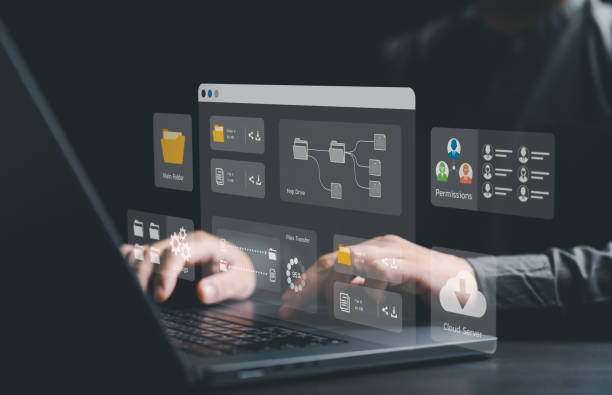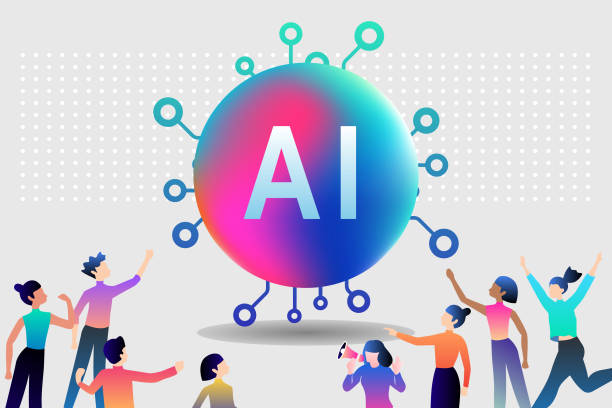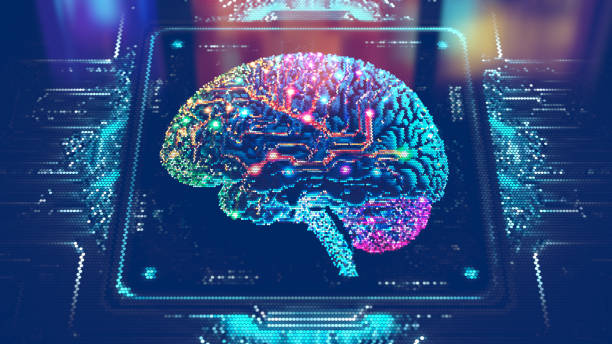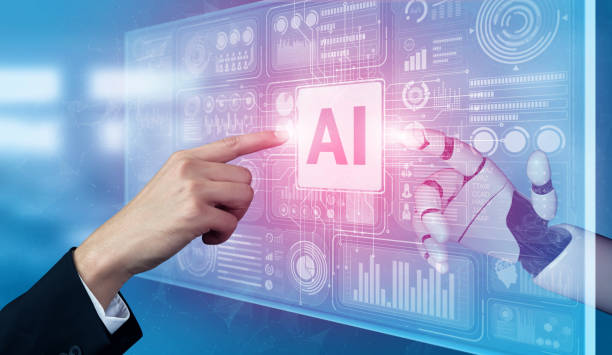Introduction to Modern UI Website Design and Its Importance

In today’s digital world, where competition is at its peak, having a website is not merely about being online, but rather about providing an exceptional #user_experience.
#Website_design with a modern #user_interface goes beyond mere aesthetics; it addresses how users interact with the website and how they feel during this interaction.
This approach forms the foundation of success for any online platform, and therefore, its importance grows daily.
In fact, a website with an outdated user interface can easily drive users away, while a modern and user-friendly design attracts them and converts them into loyal customers.
User Interface (UI) refers to all the elements a user interacts with on a website, from buttons and forms to the overall layout and colors.
However, User Experience (UX) is a deeper concept that deals with all the user’s feelings and perceptions throughout their interaction with the product.
This includes ease of use, efficiency, enjoyment, and even the sense of loyalty the user develops towards the brand.
A modern UI website design considers both UI and UX aspects in parallel to ensure that the website not only looks beautiful but is also efficient and pleasant.
The ultimate goal is to create a seamless and enjoyable experience for the user that guides them towards achieving their goals, while also fulfilling business objectives.
This comprehensive approach guarantees longevity and success in the #modern_web space.
Are you bothered by losing customers due to your online store’s outdated appearance or slow speed? Rasawweb’s expert team solves these problems with professional e-commerce website design!
✅ Increase customer trust and brand credibility
✅ Stunning speed and excellent user experience
Get a free consultation with Rasawweb right now ⚡
Key Principles in Modern UI Design
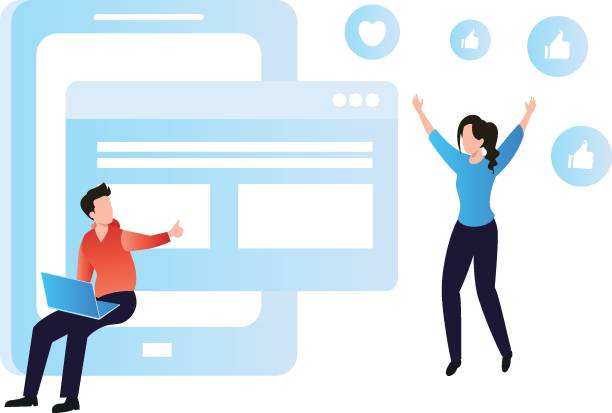
To achieve a modern UI website design, adhering to a set of fundamental principles is crucial.
The first and most important principle is simplicity and clarity.
Users should be able to easily navigate the website and find the information they need, without encountering unnecessary complexities.
Using simple language, clear icons, and an organized layout greatly helps with this.
The second principle is consistency and uniformity.
All design elements, including colors, fonts, buttons, and interaction style, must be consistent throughout the website.
This not only helps in creating a strong brand but also familiarizes users with the website’s behavioral patterns, leading to a smoother user experience.
Responsiveness is another core pillar.
Today, users access websites from various devices with different screen sizes, from mobile phones to tablets and desktops.
A Responsive Design ensures that the website displays optimally on any device and provides an excellent user experience.
Accessibility is also highly important; the website should be usable for all users, including those with disabilities.
This includes providing alternative text for images, keyboard navigation support, and appropriate color contrast.
Finally, visual feedback plays a key role in user interaction.
Every action a user performs, such as clicking a button or submitting a form, should be accompanied by visual or auditory feedback to inform the user of the outcome of their action.
These principles form the cornerstone of any modern and efficient UI website design.
The Role of Psychology in UX Design and Modern Interfaces
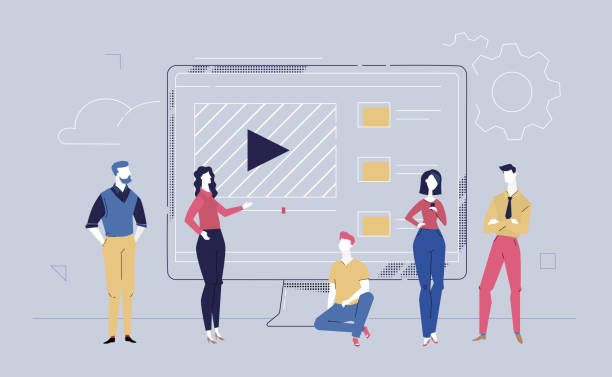
Modern UI website design, beyond visual principles, is deeply rooted in a profound understanding of human psychology.
How the human brain processes information, behavioral patterns, and decision-making all directly impact the effectiveness of a user interface.
One key concept is Cognitive Load.
Designers must organize information and elements in a way that imposes minimal cognitive load on the user.
The lower the cognitive load, the easier it is for the user to complete their tasks and enjoy the website.
This includes removing unnecessary elements, logically grouping content, and using an intuitive navigation flow.
Gestalt principles also play a vital role in UI design.
These principles explain how the human brain organizes and perceives objects as a whole.
For example, the principle of Proximity indicates that elements that are closer together are perceived as a single group.
Utilizing these principles helps designers visually organize information in a way that is understandable and logical for the user.
Emotional Design is also an important aspect that focuses on creating a positive emotional connection with the user.
This involves using colors, images, and animations that evoke specific emotions and make the user experience more enjoyable.
Finally, understanding Cognitive Biases can also be effective in designing persuasive interfaces.
A modern UI website design that places psychology at its core not only performs excellently but also instills a good feeling in users and encourages them to interact further.
| Psychological Principle | Description and Application in UI/UX |
|---|---|
| Cognitive Load | Reducing information and task complexity for users, using simple language and intuitive navigation. |
| Gestalt Principles | Visual organization of elements for better understanding; such as proximity, similarity, continuity, and closure. |
| Emotional Design | Evoking positive emotions in users through colors, images, animations, and content tone. |
| Feedback | Clear and immediate notification to the user about the results of their actions (e.g., success or failure of an operation). |
New Tools and Techniques in Modern UI Website Design
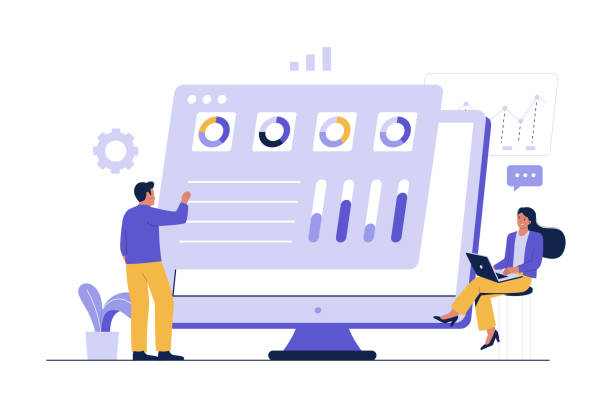
The world of modern UI website design is rapidly evolving, with new tools and techniques constantly being introduced to assist designers.
In the past, Photoshop and Illustrator were the primary tools, but today, more specialized and efficient software like Figma, Sketch, and Adobe XD are dominant.
These tools provide design, prototyping, and team collaboration capabilities in an integrated environment, significantly increasing work speed and quality.
Prototyping allows designers to interactively test their ideas and get feedback before actual coding.
One of the most important modern techniques is the use of Design Systems.
A design system is a collection of reusable principles, components, and guidelines that help teams develop digital products with greater speed and consistency.
This ensures that all website elements, from buttons to typography, are integrated and harmonious.
User Testing is also of high importance.
By observing real users interacting with prototypes, designers can identify the strengths and weaknesses of the user interface and implement necessary improvements.
Other techniques such as User Journey Mapping and User Persona creation also help designers better understand user needs and desires and provide designs tailored to them.
These tools and techniques form the backbone of an effective modern UI website design and allow teams to respond to complex design challenges with high efficiency.
Are you tired of your company’s website not meeting your expectations? With Rasawweb, design a professional website that truly represents your business.
✅ Increase acquisition of new customers and sales leads
✅ Enhance your brand’s credibility and trust among your audience
⚡ Get a free website design consultation!
Current and Future Trends in User Interface Design
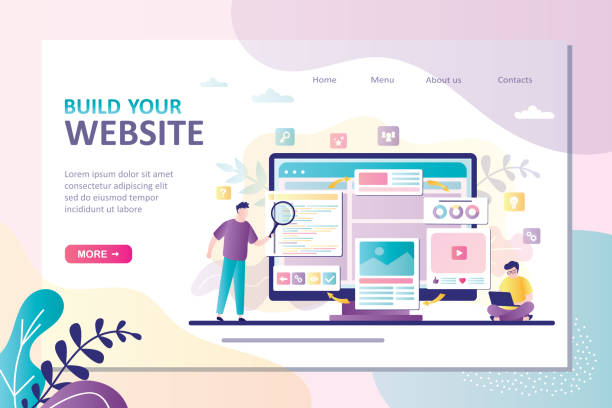
The field of modern UI website design is constantly changing and evolving, and every year we witness the emergence of new trends that improve user experience.
One of the most popular current trends is Dark Mode, which not only reduces eye strain but can also help save battery life on devices with OLED screens.
Many prominent websites and applications have provided this option for their users.
Visual trends such as Neumorphism and Glassmorphism have also added new visual effects to interfaces with soft and glassy textures, although their practical application requires caution.
Micro-interactions also play an increasing role in improving user experience.
These small and subtle animations, such as a button changing color when hovered over or haptic feedback when touching the screen, give users a sense of responsiveness and liveliness in the interface.
In the future, we will see deeper integration of Artificial Intelligence (AI) in UI design.
AI can help personalize the user experience based on individual behavior and preferences and can even automatically design parts of the user interface.
Voice User Interfaces (Voice UI) and Augmented/Virtual Reality User Interfaces (AR/VR UI) also have great potential to change how we interact with websites, especially in areas like e-commerce and education.
These trends indicate that modern UI website design is moving towards creating increasingly personalized, intelligent, and immersive experiences, where the line between the physical and digital worlds becomes blurred.
Challenges and Solutions for Modern UI Website Design
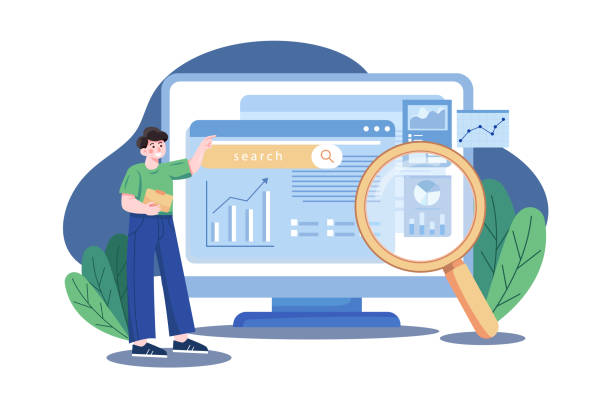
Despite its many advantages, modern UI website design also comes with challenges that designers must address.
One of the biggest challenges is maintaining a balance between aesthetics and functionality.
Sometimes, designers are tempted to focus on stunning visual effects and neglect ease of use and efficiency.
The solution is to always place the user at the center of the design process and ensure that every visual element also serves a functional purpose.
The complexity and continuous updating of technologies are another challenge.
With the constant emergence of new tools and frameworks, designers and developers must always keep their knowledge up-to-date.
Performance Optimization is another important concern.
A modern UI website that uses complex animations and graphics might have a slow loading speed, leading to user dissatisfaction.
Using optimized images, clean coding, and server optimization are solutions to combat this challenge.
Maintaining integrity and consistency at scale is also challenging, especially in large projects with multiple teams.
Utilizing comprehensive design systems and precise style guides can help resolve this issue.
Furthermore, collecting and correctly interpreting user feedback for continuous UI improvement requires specific methodologies and powerful analytical tools.
By understanding these challenges and implementing appropriate solutions, a successful modern UI website design can be provided that both meets user needs and achieves business objectives.
Case Study of Successful UI Design on the Web
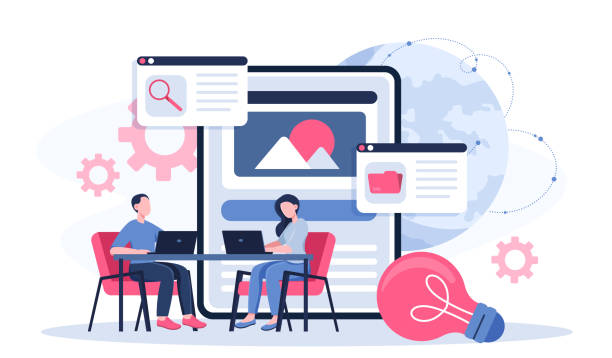
To gain a deeper understanding of the concept of modern UI website design, examining successful examples can be highly instructive.
One prominent example in this regard is the Airbnb website and application.
Airbnb has managed to revolutionize the travel accommodation industry by focusing on a visual and delightful user experience.
Its user interface is exceptionally clean, user-friendly, and rich in high-quality images, helping users easily find and book their desired accommodation.
Simple navigation and powerful filters make searching effortless.
Other prominent features of Airbnb’s user interface include the smart use of white space, readable typography, and visual consistency across all platforms.
The booking process, which can often be complex, is divided into small, manageable steps, with clear feedback at each stage.
Additionally, attention to small details such as subtle animations and appealing icons makes the overall experience more enjoyable.
| UI/UX Feature | Description | Why is it successful? |
|---|---|---|
| Intuitive and simple navigation | Clear menu structure, use of familiar icons, and minimal clicks to reach the goal. | Users easily find their way and don’t get frustrated. |
| High-quality images | Use of large and attractive photos of accommodations. | Visually attracts the user and provides more accurate and appealing information. |
| Platform consistency | Similar experience on website and mobile application. | Maintains user familiarity and builds trust. |
| Clear feedback and guidance | Clear notification at each stage of the process (e.g., booking). | Users feel in control and are less likely to get confused. |
This example demonstrates how a modern UI website design not only beautifies a product but also transforms it into a powerful tool for solving user problems and fostering business growth.
Airbnb’s success is proof that investing in top-notch UI/UX yields significant returns and pushes the boundaries of digital interaction.
The Impact of Personalization and Artificial Intelligence on User Experience Design

Personalization and the integration of Artificial Intelligence (AI) are among the most significant developments in the field of modern UI website design, moving towards creating increasingly unique and intelligent experiences.
Personalization means delivering content, layout, and functionalities tailored to each user’s needs, preferences, and past behaviors.
This makes users feel that the website has been specifically designed for them, and this feeling, in turn, leads to increased engagement, satisfaction, and loyalty.
Recommendation engines on platforms like Netflix and Amazon are prime examples of personalization, suggesting relevant content or products based on the user’s viewing or purchase history.
Artificial intelligence acts as a catalyst in this regard.
AI algorithms can analyze vast amounts of user data and identify complex patterns that humans are unable to detect.
This information is then used to create Adaptive UIs that dynamically adapt to user behavior.
For example, a website can change the arrangement of elements or the display order of products based on the user’s real-time navigation pattern.
Chatbots and AI-powered virtual assistants are also becoming an integral part of the user experience, allowing users to access information or perform tasks through natural conversations.
These advancements promise a future where every modern UI website design is not only statically designed but intelligently adapts to the changing needs of each individual, offering a truly personalized and predictive experience.
Are you tired of your e-commerce website not generating as much revenue as its potential? Rasawweb, specializing in professional e-commerce website design, solves this problem permanently!
✅ Increase sales conversion rates and revenue
✅ High loading speed and unparalleled user experience
⚡ Get a free e-commerce website design consultation!
Evaluation and Continuous Improvement of User Interface

Modern UI website design is not a static process, but a continuous cycle of evaluation, feedback, and improvement.
After the initial launch of a website, the work of designers and developers does not end; it merely begins.
Gathering user feedback and analyzing their behavior is crucial for identifying weaknesses and opportunities for improvement.
One of the most effective methods is A/B testing, which allows designers to simultaneously display two different versions of a UI element (such as the color of a button or the text of a headline) to two user groups and then compare the performance of each based on specific metrics (such as click-through rate or conversion rate).
Web Analytics Tools like Google Analytics also provide valuable information about user behavior, including navigation paths, Bounce Rate, and time spent on pages.
Analyzing this data can help uncover hidden patterns and issues in the user interface.
In addition to quantitative data, gathering qualitative feedback through surveys, user interviews, and focus groups is also very important.
These methods help understand the reasons behind user behaviors and their feelings.
The Iterative Design approach, which involves building, testing, measuring, and learning, helps teams continuously improve the user interface.
This continuous improvement process ensures that modern UI website design always keeps pace with changing user needs and market trends and fulfills its full potential to deliver an excellent user experience.
Conclusion and New Horizons in Modern UI Website Design

In summary, modern UI website design is no longer a competitive advantage but an absolute necessity in today’s digital landscape.
This approach, beyond visual aesthetics, delves deep into user psychology, aiming to create experiences that are not only efficient and enjoyable but also forge a deep and lasting connection between the user and the brand.
From simplicity and clarity in navigation to responsiveness across various devices and accessibility for all, every principle of modern design is crafted to minimize friction and smooth the user’s path toward their goals.
Looking ahead, we can expect artificial intelligence and personalization to play an increasing role in the evolution of user interfaces.
Websites and applications will become smarter, act more predictively, and offer experiences that fully adapt to individual user needs and preferences.
Challenges such as performance optimization and maintaining large-scale consistency will still exist, but with new tools and techniques, designers are more equipped than ever to tackle them.
Ultimately, the success of a modern UI website design lies in its ability to create an emotional connection with users, solve their problems, and provide an unparalleled digital experience.
This user-centric approach is the key to unlocking new horizons in the web world and ensuring success in the digital future.
Investing in this field is investing in the future of your business.
Frequently Asked Questions
| Row | Question | Answer |
|---|---|---|
| 1 | What is meant by “modern UI website design”? | It refers to designing a website that utilizes the latest trends and best practices in User Experience (UX) and User Interface (UI) to make user interaction simple, engaging, and efficient. |
| 2 | Why is a modern user interface important for a website? | A modern user interface increases user satisfaction, improves conversion rates, extends user retention time on the site, and creates a professional and up-to-date brand image. |
| 3 | What are the key elements of a modern user interface? | Key elements include simplicity and minimalism, responsiveness, effective use of white space, appealing typography, subtle animations, an appropriate color palette, and intuitive navigation. |
| 4 | What role does responsiveness play in modern UI design? | Responsiveness ensures that the website displays correctly on any device (mobile, tablet, desktop) and provides a unified user experience, which is essential for modern UI. |
| 5 | How important is typography in modern UI design? | Typography plays a very important role in readability, visual hierarchy, and brand visual identity. Modern fonts and their combinations can contribute to the overall aesthetics and appeal of the site. |
| 6 | How are animations and micro-interactions used in modern design? | Animations and micro-interactions are used to provide visual feedback, guide the user, and add a sense of dynamism and attractiveness to the user interface, provided they are not excessive. |
| 7 | What is the role of User Experience (UX) in modern UI design? | UX is the foundation of modern UI. A modern design must first be functional, understandable, and enjoyable (UX) and then beautiful and appealing (UI). |
| 8 | What tools are used for modern UI design? | Tools such as Figma, Adobe XD, Sketch, and InVision are used for design, and frameworks like React, Vue.js, or Angular are used for implementation. |
| 9 | How can overly complex design be avoided in modern UI? | By focusing on minimalism, removing unnecessary elements, utilizing ample white space, and adhering to the “Less is More” principle. |
| 10 | What is the importance of user testing in modern UI design? | User testing ensures that the designed user interface is truly useful, understandable, and engaging for users, and that potential issues are resolved before launch. |
And other services of Rasa Web Advertising Agency in the field of advertising
Smart Content Strategy: A dedicated service for growth in click-through rates based on user experience customization.
Smart Digital Branding: A novel service for enhancing campaign management through user experience customization.
Smart Social Media: An effective tool for increasing sales with the help of real data.
Smart Customer Journey Map: A fast and efficient solution for improving SEO ranking by focusing on Google Ads management.
Smart Link Building: Transform digital branding with the help of Google Ads management.
And over hundreds of other services in the field of internet advertising, advertising consulting, and organizational solutions
Internet Advertising | Advertising Strategy | Advertorials
Sources
Modern Website Design Principles
Comprehensive Guide to User-Friendly Interface
Future of Web and New Technologies
The Importance of Responsive Design in Today’s Web
? To elevate your business in the digital space, Rasawweb Afarin Digital Marketing Agency, specializing in secure website design and SEO, is always with you to ensure a powerful and lasting online presence.
📍 Tehran, Mirdamad Street, next to Central Bank, Southern Kazeroun Alley, Ramin Alley, No. 6

